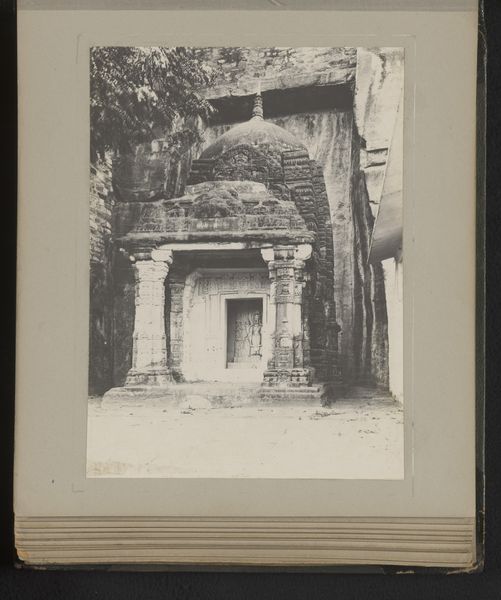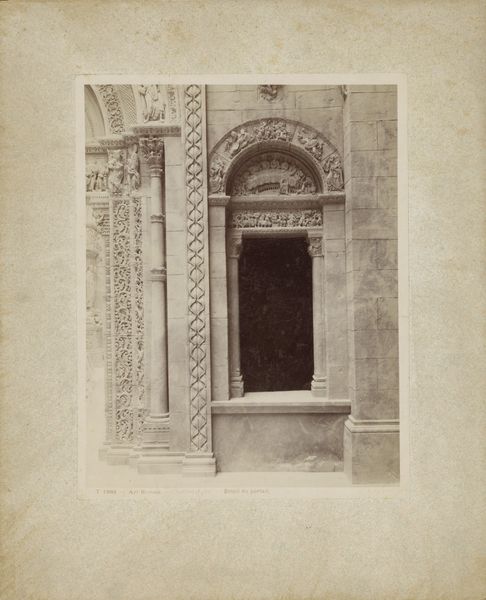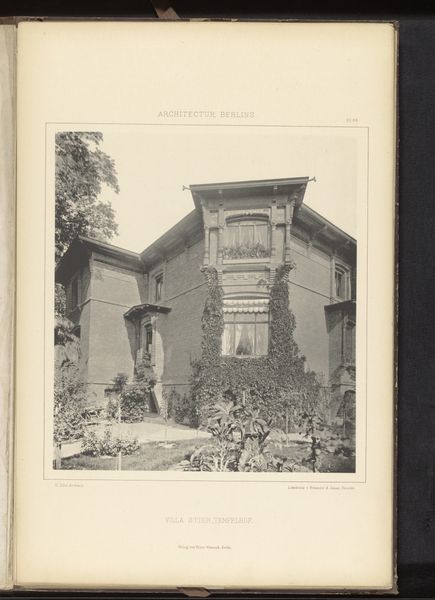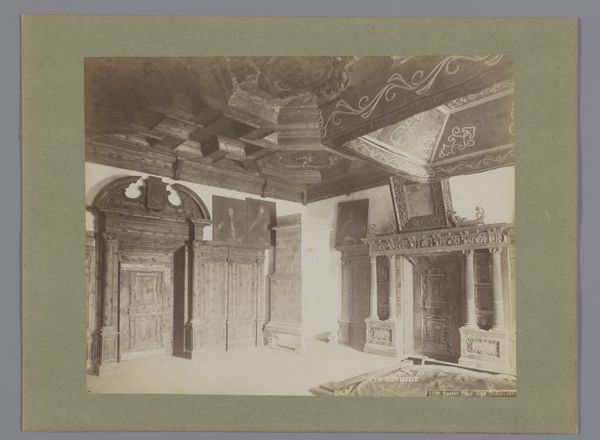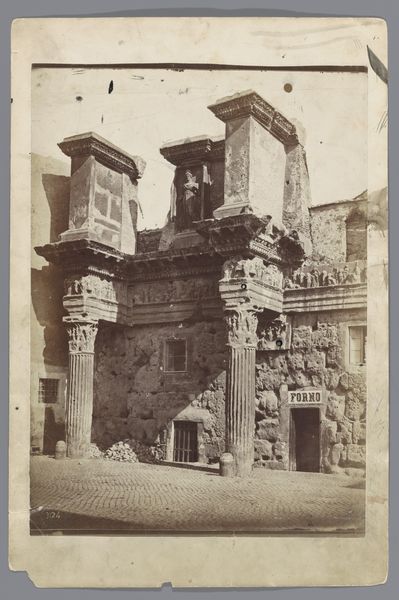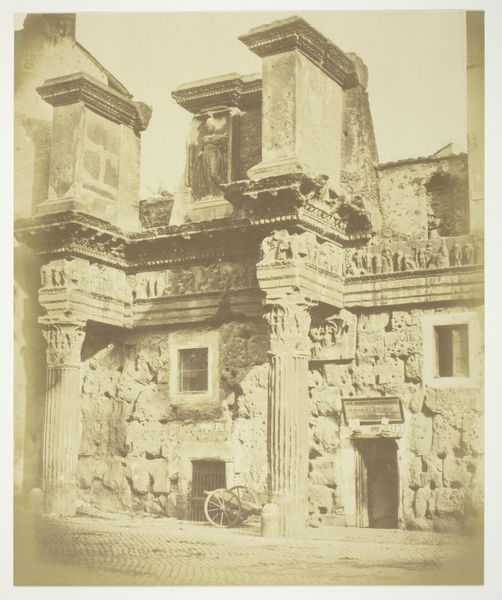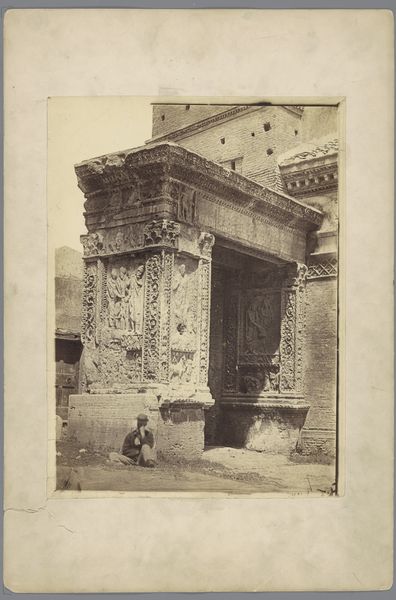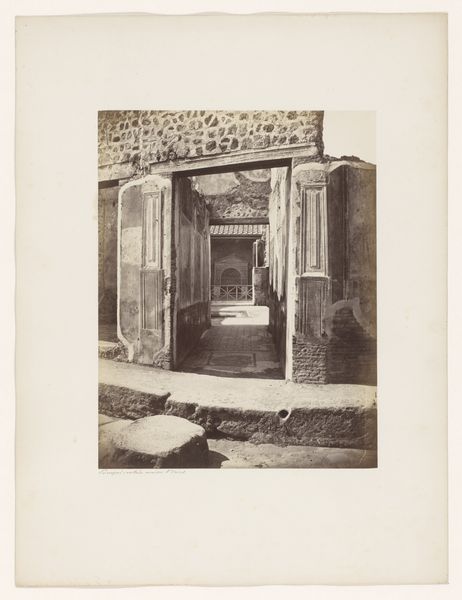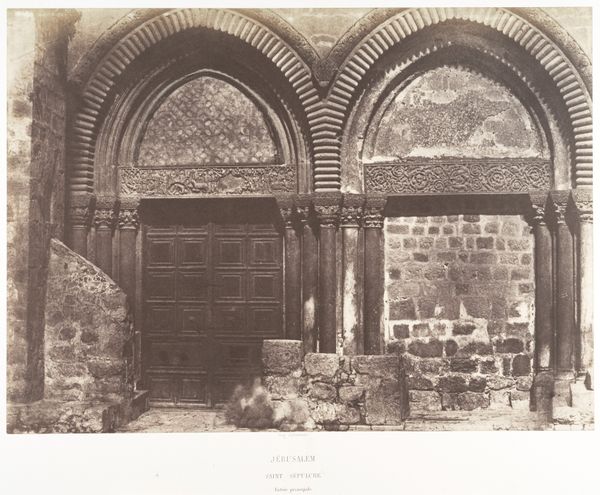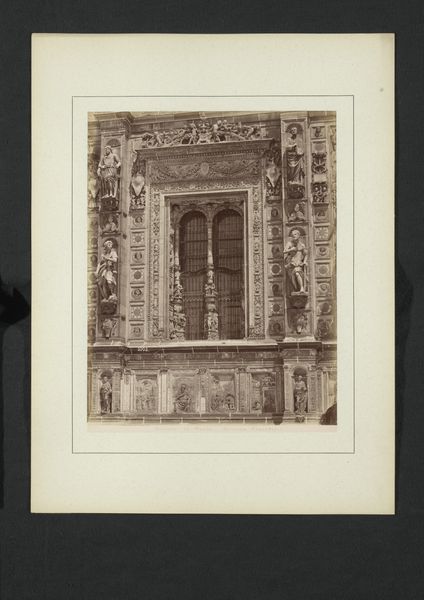
photography, albumen-print
#
asian-art
#
landscape
#
photography
#
albumen-print
#
realism
Dimensions: height 170 mm, width 122 mm
Copyright: Rijks Museum: Open Domain
Curator: Immediately, I sense a quiet dignity, almost somber. The monochromatic tones accentuate the worn textures of the wall, focusing your eye toward that intricately carved doorway. Editor: Indeed. What we’re looking at is an albumen print from 1894 by Christiaan Johan Neeb. It’s titled "Poort van een huis, gezien van binnenuit," which translates to “Gate of a House, Seen From the Inside." Neeb was known for documenting aspects of life in the Dutch East Indies. Curator: And it's critical to remember that while seemingly objective, these photographs served the colonial gaze. This image offers a romanticized vision, perhaps intentionally overlooking complexities of power dynamics within Balinese society at the time. The way this space is presented can tell us a lot about how the colonial power structured views of this period. Editor: That’s a crucial point. The photograph seems to position the viewer as an insider, looking out at this domestic setting, perhaps encouraging a feeling of understanding. Yet, this very accessibility raises questions of cultural appropriation and representation. The photo style fits neatly in a nineteenth-century vogue that circulated exotic and enticing images of Southeast Asia. Curator: The composition itself also invites inquiry. The deliberate framing centers that ornate door; it is less of a passageway, but more a point of focus, creating both literal and symbolic division between inside and outside, native and colonial, us and them. How are viewers meant to process this division? Editor: The detail captured with this medium is incredible— you can practically feel the rough texture of the plastered walls. One has to think of how institutions, and public appetite for exotic photographs, spurred photographic exploration and created new methods and motives. Curator: What I find interesting here is its function. By aestheticizing the mundane, it perpetuates certain stereotypes of Indonesian domestic life to an eager Western audience. What purpose did this exoticizing imagery serve within the bigger framework of Dutch colonialism? Editor: Absolutely. When you consider Neeb's image within this wider historical context, a single photograph becomes a window into power structures. I’m drawn to think more about the forces influencing these photographs. Curator: Exactly. And with just a brief glimpse at this albumen print, our contemporary vantage allows us to examine its historical context.
Comments
No comments
Be the first to comment and join the conversation on the ultimate creative platform.
